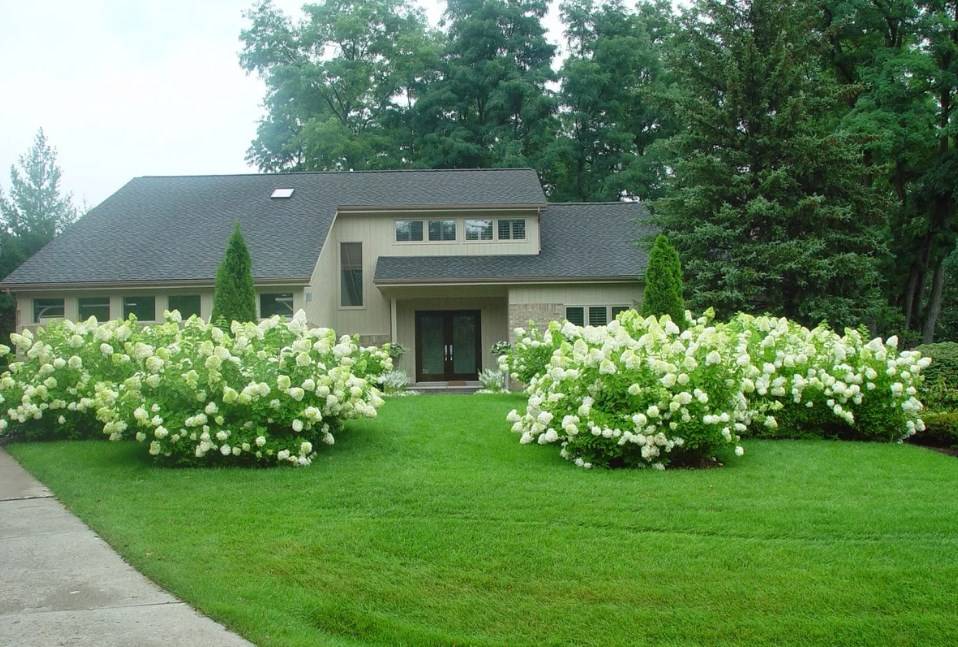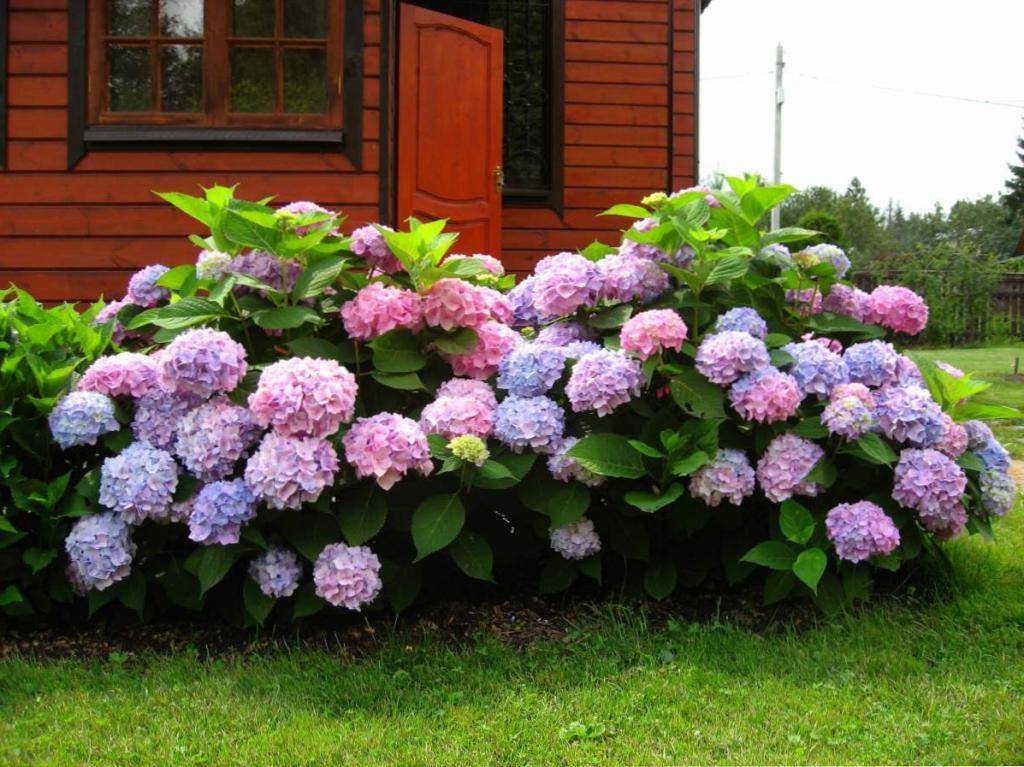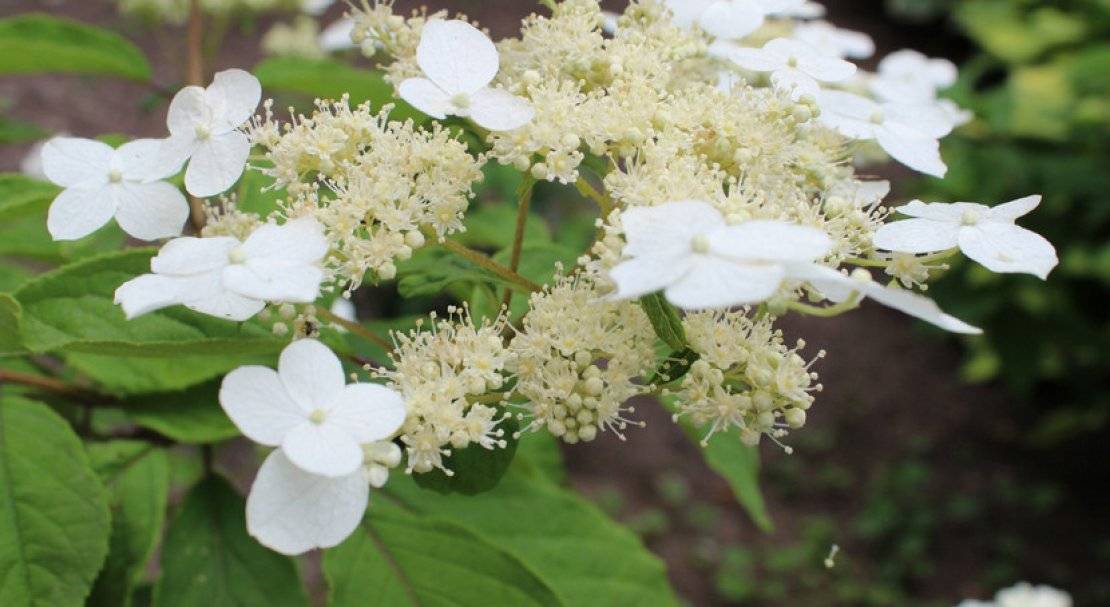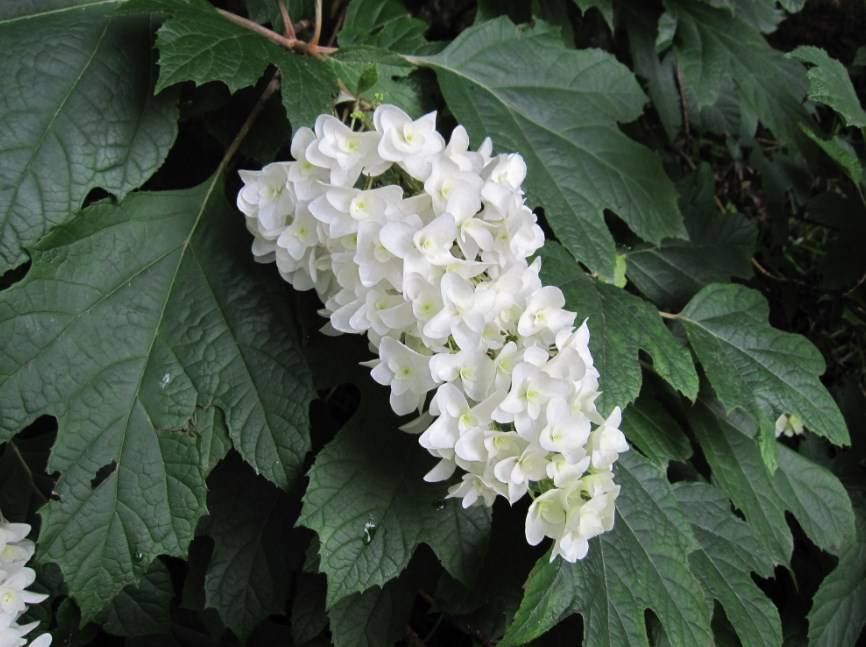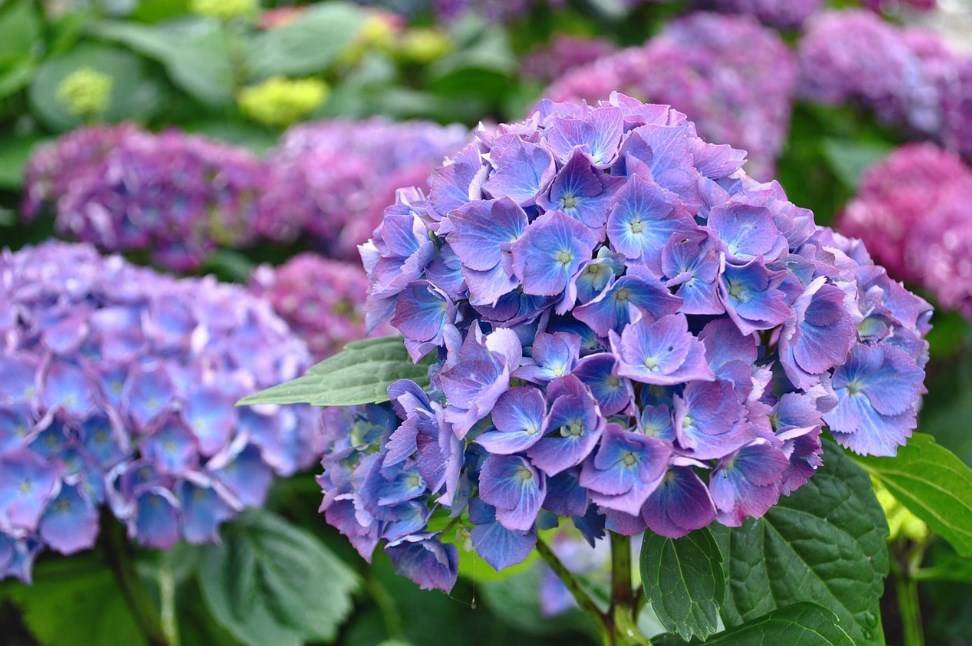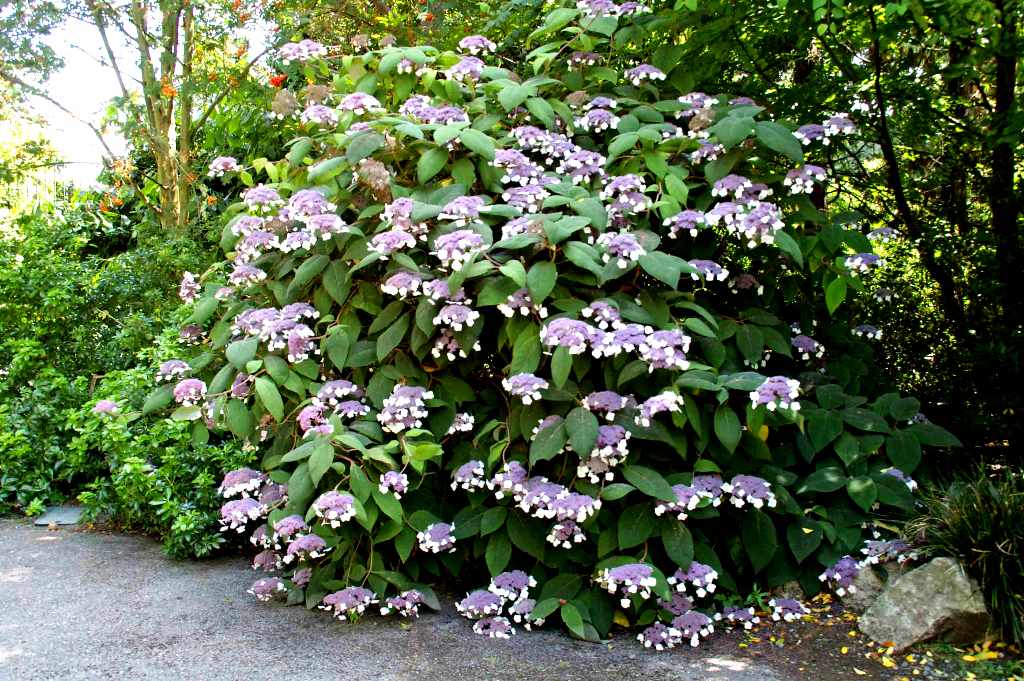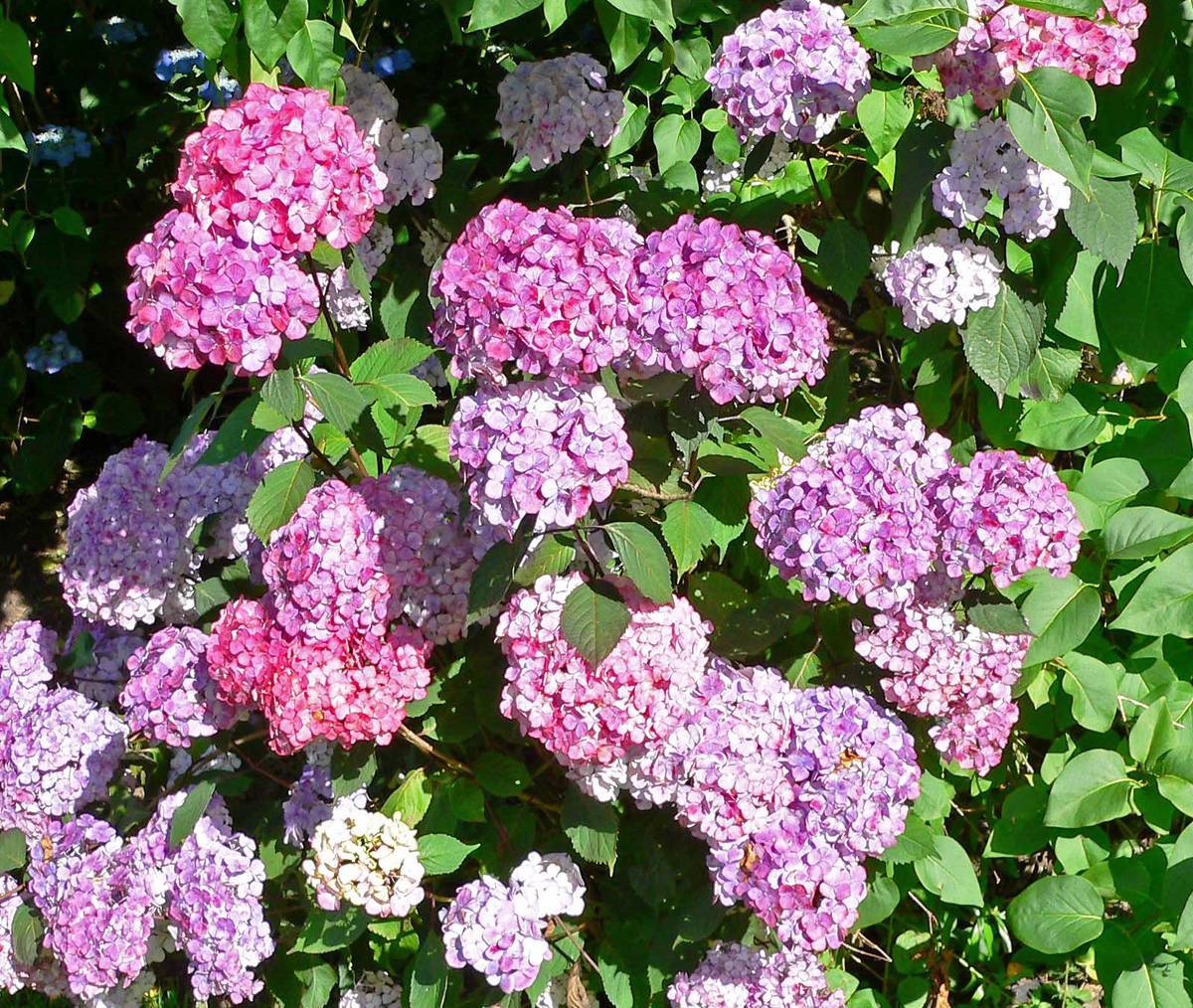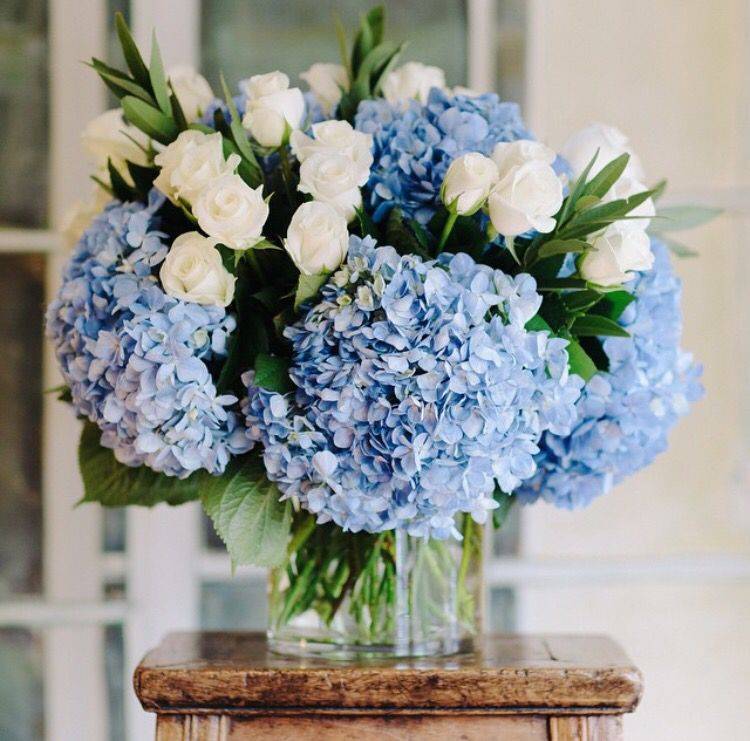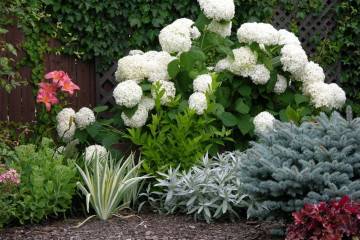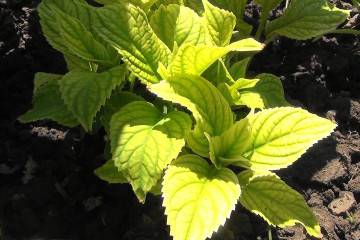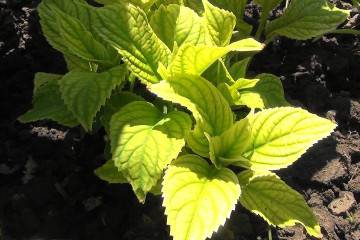Hydrangea varieties new, hybrid, for shady places, low
Content:
Hydrangea is an ornamental plant that has become widespread. Due to demand, breeders continue to introduce new crop varieties every year. Also, the shrub is valued for its long lush flowering, a variety of varieties and unpretentious care.
General plant descriptions and classification of species and varieties
Wild and varietal hydrangeas are miniature trees or shrubs, on which a large number of delicate large flowers with 4 sepals are formed, visually resembling petals. The shape of the leaf plates is characteristic ovoid.
In nature, the plant is common in East and South Asia. Most often found in China and Japan.
Treelike hydrangea of the red variety is the most widespread and demanded variety of decorative culture. In the wild, it grows only in North America. The large-leaved variety forms large flowers, the diameter of the shield of which reaches 15 cm. The culture is frost-resistant, so it can be grown in regions of Russia with unfavorable weather conditions, for example, in the Moscow region.
Hydrangeas species and varieties for Russian gardens
Hydrangea varieties already have hundreds of varieties. Without exception, all representatives of the species are thermophilic crops. For successful cultivation, for example, in Siberia, it is necessary to use only proven varieties that have previously been successfully cultivated in this region.
Panicle hydrangea (H. paniculata sieb.)
The paniculate variety grows in its natural environment on the islands of Japan and in China. The bush is formed of compact size, the height does not exceed 1.5 m, the flowering is lush. At first, the petals are greenish-white in color, as they mature, pinkish shades begin to prevail.
Treelike hydrangea (H. arborescens l.)
This is an ornamental plant native to eastern North America. It is formed in the form of a spectacular tree, the height of which reaches no more than 1 m. The leaves are characterized by a lanceolate shape. The culture is winter-hardy, has excellent decorative qualities. The duration of lush flowering under favorable growing conditions is 3-3.5 months.
The most appreciated variety is Anabel. It blooms with large snow-white flowers, the diameter of which reaches 25 cm. Under the weight of the inflorescences, the branches stretch down. Grows well in slightly acidic and neutral types of soil.
Garden hydrangea
The varieties of this type of ornamental culture are adapted to the climatic conditions of the Moscow region. They are in great demand due to their long and lush flowering.
It is a perennial plant with large egg-shaped leaf plates. No more than 2 m in height.Lush inflorescences with a diameter of up to 30 cm are formed on strong, erect stems.
Bretschneider ground cover hydrangea (H. heteromalla 'bretschneideri' dipp.)
This is a perennial flowering plant that began to grow a long time ago.The lush bush can reach a height of 4 m, the crown does not exceed 3 m in diameter.
The leaves are oval-oblong with jagged edges. The color of the petals at different stages of their development changes from light white to rich lilac or pink.
Oak-leaved hydrangea (H. quercifolia)
One of the most unusual types of hydrangeas. It is a perennial culture, the height of which does not exceed 1.5 m. A distinctive feature is large leaf plates that visually resemble oak leaves. In this species, large paniculate inflorescences are formed.
Radiant hydrangea (H. radiata)
The plant is a deciduous shrub, the height of which does not exceed 2 m, with pubescent young shoots. In its natural environment, it grows on the mountain slopes of the eastern part of North America. The leaves are lanceolate, their length is no more than 12 cm.
White veins are visible on the reverse side of the leaf plate. Flowers are formed in white color, they are up to 12 cm in diameter. The species is characterized by rapid growth rates and poor frost resistance.
Ash hydrangea (H. cinerea)
This is an erect shrub no more than 2 m high. There is another name - gray hydrangea. The leaves are characterized by a broadly ovoid form of a rich green color. Flower petals are painted in classic white shades, they are grouped in thyroid inflorescences with a diameter of no more than 12 cm. Lush bloom is observed from July to October.
Serrated hydrangea (H. serrata)
When asked which hydrangea is the most unpretentious, many growers boldly answer that it is serrated. It is a shrub with rather large inflorescences. Cut inflorescences retain their decorative properties for a long time. In the wild, the plant grows in East and South Asia.
The plant is characterized by the presence of erect shoots up to 1.5 m high, leaves of a dark green color of a classic lanceolate shape.
Fruiting flowers are sky blue or cream in color, while fruitless flowers are pink or bluish. The final shade will largely depend on the concentration of soil acidity. Under favorable growing conditions, the plant blooms from June to September. Most gardeners appreciate it for its excellent decorative qualities, even in autumn, when most other varieties are already preparing for the dormant period, shedding buds and leaves.
There is also a wide variety of hybrid hydrangeas for shady areas.
How to determine the type and variety of hydrangea by flowers and leaves
Determining the variety is quite simple, you just need to evaluate the shape, structure and color of the leaves. For example, the paniculate variety forms oblong and rigid elliptical leaf plates. As for the tree-like species, it has a large ovoid leaf blade with a heart-shaped notch at the base. Narrow-leaved varieties are characterized by the presence of an oval leaf with a serrated edge, slightly bent back.
You can also calculate the variety by inflorescences. Paniculata and varietal hydrangeas during the flowering period are covered with a large number of white caps. Large-leaved ornamental crops can be raspberry, blue or pink in color. In paniculate plants, the inflorescences are characterized by a conical shape.
Hydrangea is a perennial shrub plant that not only has excellent decorative qualities, but is also easy to care for.Growing a healthy and luxuriantly flowering bush is within the power of not only experienced gardeners, but also beginner growers. You can buy high-quality planting material in a special nursery or from friends. It is not recommended to take seedlings in the markets.
